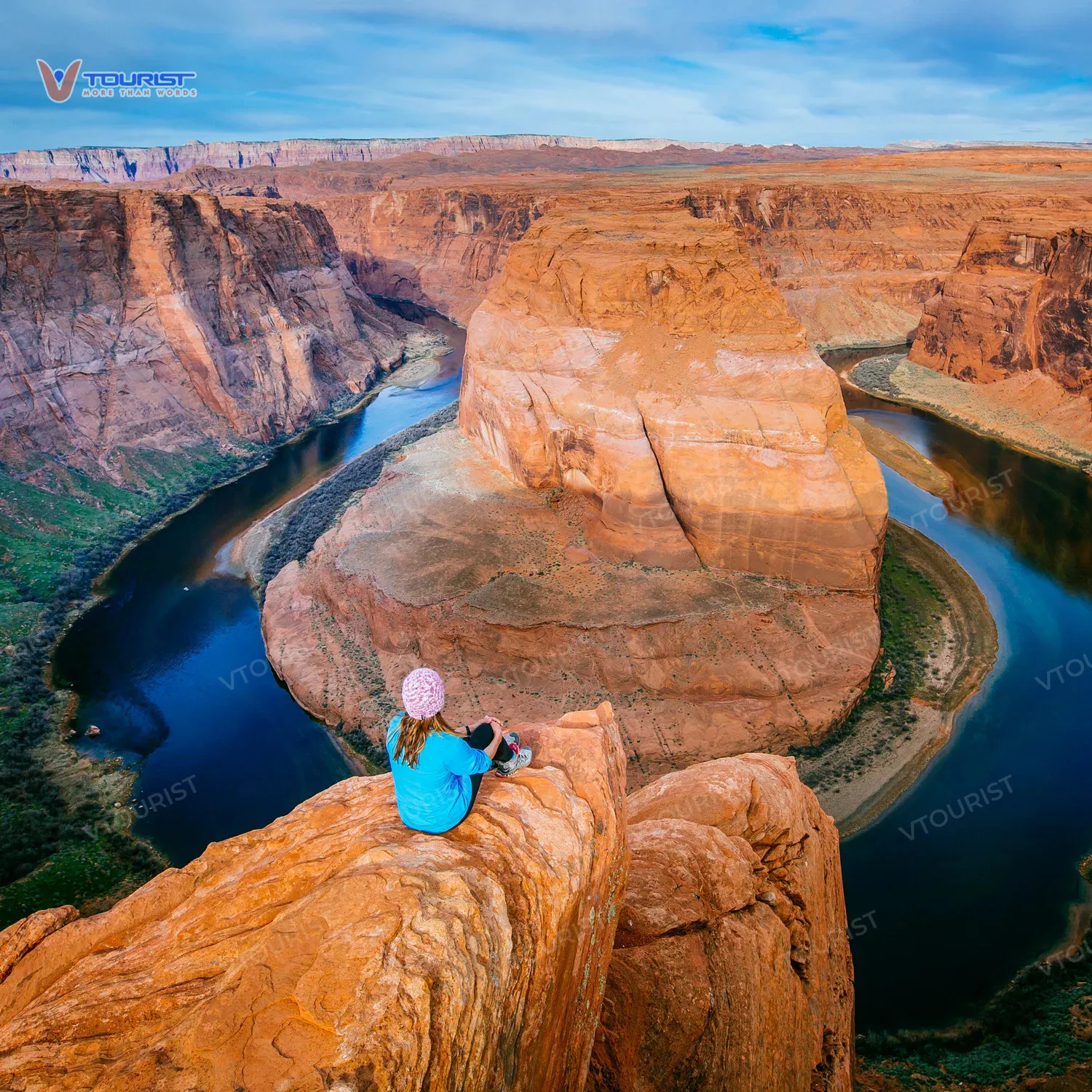Arizona, renowned for its vast deserts and majestic canyons, is a paradise for nature photography enthusiasts. From vibrant red rocks to winding rivers, Arizona boasts countless breathtaking landscapes, promising unique and impressive shots. Let’s explore the most beautiful locations where you can unleash your creativity and capture memorable moments in this remarkable land.
Horseshoe Bend – A Horseshoe-Shaped Masterpiece by the Colorado River
Horseshoe Bend, a celebrated natural wonder of Arizona, is located near the city of Page. It’s a stunning horseshoe-shaped meander of the Colorado River, formed by millions of years of erosion. Towering red sandstone cliffs embrace the turquoise river, creating a mesmerizing contrast.

What makes Horseshoe Bend special is not only its unique shape but also the magical color changes throughout the day. Sunrise brings warm hues, while sunset paints the scene in fiery reds, creating romantic and emotional settings. With its expansive views and majestic scenery, Horseshoe Bend is an ideal destination for photographers seeking to capture the endless beauty of nature.
Antelope Canyon – The Magical Canyon of Light and Stone
Antelope Canyon, a narrow slot canyon famous for its ethereal light beams and unique rock formations, is not far from Horseshoe Bend. Antelope Canyon is divided into two sections: Upper Antelope Canyon and Lower Antelope Canyon.
Upper Antelope Canyon is more easily accessible and famous for sunlight shafts that penetrate directly into the canyon at midday, creating a shimmering, magical effect. Lower Antelope Canyon, in contrast, requires descending steep stairs but offers unique and less crowded perspectives.

The soft sandstone walls, sculpted by water and wind over millions of years, form captivating curves. Light filters through the canyon’s opening, reflecting on the rock surfaces and creating countless shades, from vibrant orange to mystical purple. Antelope Canyon is a haven for photographers who love creativity and want to explore nature’s hidden beauty.
Grand Canyon – Timeless Grandeur
The Grand Canyon, one of the world’s greatest natural wonders, stretches over 277 miles (446 km) long, up to 18 miles (29 km) wide, and over a mile (1.6 km) deep. This immense canyon was carved by the Colorado River over millions of years.

The canyon’s multi-layered walls, displaying colors from red, orange, and yellow to brown and gray, record a rich geological history of the Earth. From the Rim Trail, a walking path along the canyon’s edge, you can admire panoramic views of the Grand Canyon in all its majestic and breathtaking beauty. Sunrise and sunset are ideal times to photograph the Grand Canyon, as sunlight highlights the canyon’s contours and colors.
Sedona – Land of the Red Rocks
Sedona, a small town nestled amidst towering red rock formations, is known as Arizona’s “spiritual vortex.” With its vibrant red mountains, deep canyons, and lush green forests, Sedona offers a unique and enchanting beauty.

Bell Rock, Cathedral Rock, and Snoopy Rock are among Sedona’s most famous landmarks, with their distinctive shapes and stunning scenery. You can hike, walk trails, or simply relax and enjoy the beauty of nature. Sedona is also an art hub, with numerous galleries and shops selling local crafts.
Saguaro National Park – Kingdom of Giant Cacti
Saguaro National Park, a nature preserve near Tucson, is famous for its giant Saguaro cacti, symbols of the Arizona desert. Saguaro cacti can grow up to 66 feet (20 meters) tall and live up to 200 years, creating a unique and impressive landscape.

Saguaro National Park is divided into two distinct districts: the eastern Rincon Mountain District and the western Tucson Mountain District. The eastern district has higher mountains and more pine forests, while the western district is flatter and has a higher concentration of Saguaro cacti. You can drive along scenic roads, hike trails, or simply admire the giant cacti under the sunlight.
Tips for a Nature Photography Trip in Arizona
For a successful nature photography trip in Arizona, keep these tips in mind:
- Timing: Spring and autumn are the best times to visit Arizona, with mild and pleasant weather.
- Attire: Wear comfortable clothing, sturdy walking shoes, and a hat to protect yourself from the sun.
- Hydration: Always carry enough water, especially when hiking or climbing.
- Equipment: Prepare all necessary photography equipment, including your camera, lenses, tripod, and spare batteries.
- Safety: Be cautious when walking near cliff edges or climbing on high rocks.
Arizona is a land full of wonders and surprises, where you can discover unique natural landscapes and capture memorable moments. Plan your photography trip today and explore the endless beauty of Arizona!
Conclusion
Arizona, with its myriad of magnificent and unique natural landscapes, is a perfect destination for photography enthusiasts. From the gracefully curving Horseshoe Bend to the magical Antelope Canyon, from the majestic Grand Canyon to the spiritual Sedona and Saguaro National Park filled with giant cacti, each location offers unique experiences and perspectives. We hope these suggestions will help you have a memorable journey of exploration and creativity in Arizona, capturing the most beautiful moments of nature and bringing back unique works of art. Are you ready to grab your camera and explore Arizona?